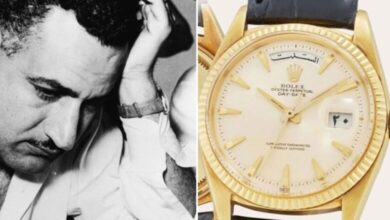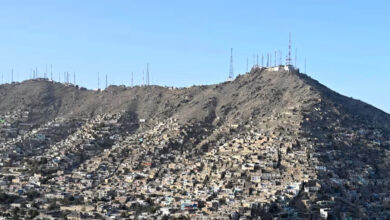The revolution of 1952 was less the result of a clear, shared vision of Egypt’s future, than a consensual desire to break with the past. Like other nations emerging from colonial rule, Egypt wished to redefine itself in modern terms, as a dynamic, disciplined entity that scorned western interference, and was able to fulfill its own needs, "everything," in the words of Gamal Abdel Nasser "from needles to rockets". Egypt’s new leaders hoped to embody these aims, indeed, to personify the nation’s reinvigorated, iconoclast character. "Such is the custom of kings to efface that which came before them" wrote 14th century Arab historian al-Maqrizi, and so it was with 39-year-old president Nasser. Yet the superficial contrasts between pre- and post-revolutionary Egypt remain less striking than the deeper similarities.
Just as the press once dwelt on the palace, so would photojournalism be devoted to the presidency, depicting presidential powwows, ribbon cuttings, and diplomatic receptions where, in the Nasser years, foreign dignitaries bowed to present their credentials, a gesture formerly reserved for kings. Seen as the first "real" Egyptian to rule since the pharaohs, Nasser entered politics as a man of the people, but before long proved as stonily autocratic as his distant ancestors, a tradition to which his successors have enthusiastically adhered. In the press and elsewhere, a new style of sycophancy emerged, not the urbane hypocrisy of royal protocol, kissing the king’s hand and dissing him behind his back, but a more cautious and pervasive self-censoring whose ramifications for Egyptian culture and society have yet to be thoroughly assessed.
When Egypt’s independent press was nationalized in 1961, the lines between photojournalism and the state’s agenda converged. Newspaper editors and the photojournalists they employed owed their positions to the regime, and held them not necessarily on the basis of qualifications and performance, but loyalty. The state-control of the press affected news-related photographs, but a controlling state shaped attitudes towards photography in general. Egypt’s visual culture, both the fine and applied arts, was subjected to direct and indirect forms of censorship, since those who crossed the tacit lines of sedition might lose their jobs, freedom, or lives. The result was the declining quality of press photography, and the scarcity of artistic photography throughout the balance of the 20th century.
The Free Officers administered the coup de grace to a failing monarchy and an unpopular occupation, undermined by decades of nationalist agitations. Once in power, they abandoned their supporters: workers’ unions were brought under state control, student unions dissolved; strikers and religious leaders hung, General Mohamed Naguib, the "face" of the revolution, deposed and placed under house arrest. At the same time, the practical value of revolutionary policies like free education, food and fuel subsidies and the promise of a government job on graduation, weaned Egyptians away from idealistic political demands towards a more comfortable, quotidian compromise.
In 1954, the average Egyptian knew little of Nasser, seeing him as a "high-minded headmaster determined to ginger up the standards for the school", but by the end of the decade his transformation from a "timid technocrat" to a national icon was complete. Nasser read the papers daily, and understood the media’s power. In 1955, having seen a story concerning a British boy who ran away from home because he wanted to visit Egypt, Nasser invited the boy and his parents on a state-sponsored tour, accompanying them around the sights with a Pathé News cameraman trailing at their heels; the newsreel footage showed in cinemas world wide.
A tall, bulky but graceful man, at perfect ease before the camera, Nasser was almost always seen grinning winningly. Whether meeting the heads of African nations whose struggle to overthrow colonialist domination he championed, or the Soviet leaders who funded the Aswan High Dam, Nasser was warm and smiling, disarming even his most restrained foreign visitors. Holding hands, as Arab men often do, with Libyan Colonel Qadhafi and Kenya’s president Nemeiri, welcoming Brezhnev, Khrushchev, Eisenhower, Nixon, Castro and Che Guevara with hugs and shoulder pats as old friends, enfolding children in his brawny embrace, or being exuberantly kissed by fellahin who had benefited from land redistribution schemes, Nasser’s photographs are marked by physicality. Often photographed from behind, with his broad shoulders facing an ecstatic crowd, his face was so well-known it didn’t have to be in the picture.
Early in his career Nasser chose Hassan Diab, staff photographer with the newspaper Akhbar al-Yom, to accompany him on his appearances in Egypt and around the world. A talented photographer, Diab became a close companion; Nasser liked how he never called attention to himself or his camera. Other photojournalists – and portraitists – nonetheless clamored for Nasser’s photo; not only was he news, including a shot of him in their portfolio or hanging one in their studio was a mark of the regime’s approval and an advertisement of privileged access to power. In 1957, as elected president with the Suez Canal nationalization and the Tripartite Aggression both successfully behind him, Nasser could do no wrong. His face became a cottage industry; his photograph was sold in mass-produced ornately framed portraits, and reproduced on T-shirts, match boxes, bric-a-brac, and even prayer carpets.
"You had to have seen … the morose Gamal Abdel Nasser of yesterday" wrote one observer, "to see the change in him now as he was lifted above the heads of a howling mob, waving his arms like a drowning man on a boiling sea …" Nasser was often depicted happily immersed in frenzied crowds. In Egypt, Algeria and Syria men climbed over one another to touch him. His availability to the people, even following a 1958 assassination attempt, was unprecedented and unmatched by his successors. The drama of his appearances, captured best by Hassan Diab, conveyed the sense of a nation overcome by enthusiasm, when in fact a fatal ambivalence gnawed at its core. "I am the expression of a movement" Nasser liked to say. Half freedom-fighter, half tyrant, he reflected the conflicting desires of the Egyptian people to both win their rights whatever the cost, and defer to a strong and charismatic leader.
Excerpt from Photography and Egypt, Maria Golia (Reaktion books, UK, 2010)




